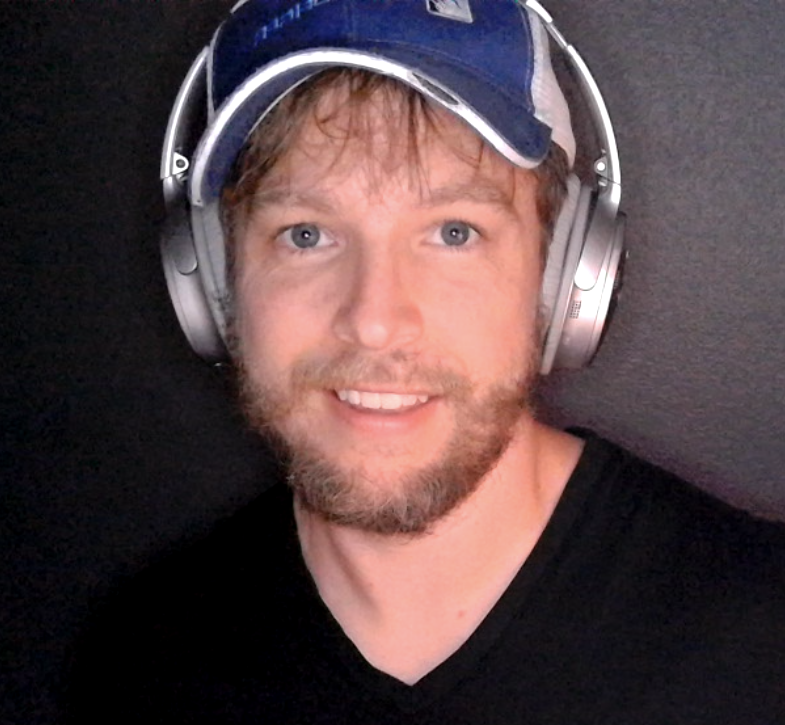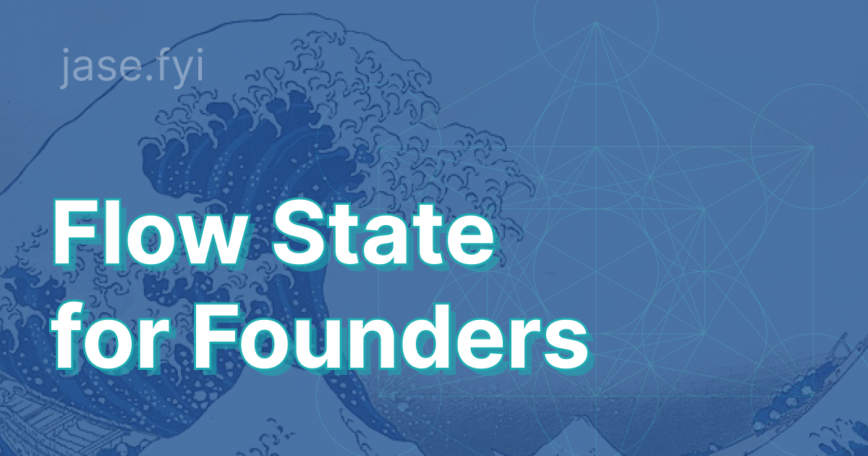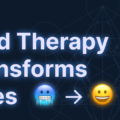“When we choose a goal and invest ourselves in it to the limits of concentration, whatever we do will be enjoyable. …Once we have tasted this joy, we will redouble our efforts to taste it again. This is the way the self grows.” ― Mihaly Csikszentmihalyi, Flow
Ever been working deeply on something and suddenly everything seems effortless? Answers seem to come to you out of the blue, and you know exactly what to do. You’re “in the zone, “making breakthroughs, doing in hours what otherwise might’ve taken days or even weeks?
If so, then you know flow state.
What if you could work like that multiple times a week? The goal of this post is to share a few of the techniques that have worked for me in working toward a personal goal of “frequent sustained creative synthesis flow states I summon at will.”
Why flow matters
People working on startups are called upon to deliver extraordinary results day after day. As individual contributors, as leaders and as managers, every moment counts. It’s crucial that people working startups “become their most formidable selves” as Michael Seibel shared with us on day 1 of Y Combinator. Practicing flow state is one way of doing so that brings compounding advantages over time.
Flow is more than doing in a few hours what might’ve taken a day. Flow is a way of unleashing your full creative potential, which you’ll need to build anything new.
Journey to flow at will
Early in my career flow was a rare anomaly. I would occasionally get these magic sessions and make huge progress in short bursts of time. They felt like a godsend to someone with ADHD. I was grateful for when they happened, but flow states were elusive and seemed entirely random.
Later I developed practices that helped bring about more flow states, including a 10+ year journey of life logging, testing out habits and methods. The journey has involved hacking sleep, freezing, terrifyingly hard early morning kettlebell sessions and many efforts to train and retrain the mind.
But last year something happened that has led to a 5x+ increase in days with work sessions I would characterize as flow state. Last year, during a work break Youtube recommended a 10 minute video from an intriguing young Irish American immigrant named Rian Doris who’s work at Flow Research Collective has helped me reach a new level of productivity.
Since following Rian & FRC’s work, studying their weekly videos and posts for hours, I’ve documented substantial increase in flow frequency, duration and depth, including accomplishing breakthrough work I do not believe I would’ve been capable of achieving last year. More than that, I’m happier with work, with a greater sense of control over output as well as reward from output. As Csikszentmihalyi put it:
Flow is like a magnet for growth. It pulls us to higher and higher levels of being, to increasingly more complex experiences.”
I’m still not to the personal goal of flow states summoned at will, but much closer than one year ago. The following is a summary of the key concepts that helped me 5x my sustained flow state frequency. While nothing is a substitute for watching Rian’s vids & reading FRC’s posts, hopefully you’ll see that you can get going right away on your own journey to frequent flow. FRC also offers a formal training program I’m excited about trying out later this year.
Keys to Flow
🔑 1. Flow is cyclical, not binary
Before seeing Rian’s vid I thought of flow state like a light switch. All of my efforts to get into flow aimed to turn on that switch. I didn’t understand flow in its proper context: as part of a clear cycle of cognitive states and efforts.
The cyclical nature should be intuitive for anyone who’s studied wave forms, but for years I tried to jump into flow without understanding the before and after. Understanding the flow cycle was a massive leap forward in getting into flow methodically instead of by magic chance.
Understanding flow, flow proneness, flow triggers and flow blockers begins with understanding the flow cycle. The flow cycle has four phases:
- Struggle – during this phase you’re researching, learning, developing plans, and getting ready. Struggle is the part most of us occupy most of the time without concerted effort to reach the next phases. Set and clarify goals here.
- Release — during this phase you’re going ot pop out of struggle into flow. How? Often the counterintuitive answer is unrelated to the specific goal you’re trying to accomplish, such as exercise. Distract the frontal cortex for awhile then bias toward action.
- Flow — this is the phase you’re after, but it requires understanding and working through the other phases in order to make it accessible frequently.
- Recovery — once you’ve completed a flow session it’s vital that you recuperate after expensive cognitive demand. This can take minutes to days depending on the effectiveness of your recovery, discussed below.
🔑 2. Clarify what you want, and why
Set ultra clear goals for what you intend to accomplish.
Get the right root of the problem you’re trying to accomplish, write it down, break it down from large goal requiring multiple days or weeks of effort into a concrete list of specific steps you can take. For me, this maps directly to the Struggle phase, as it can be a grind. To decompose a problem requires learning, analysis, reasoning and often revision.
🔑 3. Optimize for flow proneness
Getting into flow and staying in flow requires careful understanding of cognitive load, activation energy, and observing the countless little things that pop up through the day keeping you from your peak cognition.
Optimize your environments
Environment is key to flow. Working in a place that’s inspiring, minimal, and focused on the work at hand maximizes flow odds. But there’s more than visual stimuli.
- Build your flow dojo
- Have a variety of sit, stand & walk configurations to work through the day
Optimize recovery: take boring breaks
Effective recovery is at the heart of peak performance. But what makes recovery effective?
Understanding the difference between relaxation and recovery is the first key to getting recovery right.
Scrolling social media or watching tv might be relaxing, but it’s not recovery.
The best recovery breaks are very boring, so that the work itself is more interesting.
Exercise is an extremely effective tool in recovery, especially cardiovascular such as HIIT. I personally love kettlebell challenges – they’re compact in space and time: you can generate a ton of results in 15 minutes with kettlebells.
Contrast therapy has been a game changer for my recovery.
Going on long walks near running water helps too, as long as I don’t accompany it with checking social media, or high cognitive load distractions from work.
Understanding what works for you is a personal journey.
Optimize your schedule
Where we invest our time heavily influences results we achieve.
Optimizing time requires understanding where our time is going.
The goal is to get to a place of effortless exertion on the most important tasks.
Flow can be easily squandered on unproductive tasks, such as social media scrolling.
Flow can be hard to enter and maintain with competing time priorities. Time can slip away.
To minimize time slippage requires productivity system with some way to track time invested.
Clear goals and time tracking lead to faster entry into flow state, reducing struggle and increasing productivity.
- Find your chronotype – when you’re going to be most likely to enter flow states based on your wiring.
- Practice work compression – forcing hard limits on the number of hours you’re working vs recovery and family, social & personal time. Give yourself less time than you think you need to complete the task.
- Explore the Inverted morning routine. As someone who practiced a tightly scripted bootup sequence for years, I was very startled by this concept. Rian points out that some if not all of these routines should be deferred until after the first block flow time. There are many reasons why you should give this a try:
- theta waves are highest right after waking up
- answers that might’ve synthesized during sleep are easiest to retrieve before the day is underway
- there is a powerful “done” anchor out of the gates
- biohacks flood dopamine – too much too early can overwhelm the system, rather than timing for steady release
Overthinking is the enemy of flow. Once the fundamentals are understood, get out of your way.
Overly complex productivity systems waste cognitive capacity on process for the sake of process. Worse, doing productivity system meta work can wire up dopamine hits that aren’t tied to shipping the results you’re after.
Find a simple system that works for you. I am trying a version of the inverted pyramid with highest leverage next task, and boring breaks with workouts.
🔑 4. Identify and eliminate flow blockers
Flow triggers encourage and induce flow. Flow blockers work in the opposite direction.
The problem is that most modern offices are flow blocker cornucopias.
🔑 5. Widen your “flow channel”
Boredom and anxiety are states of psychic entropy.
You’re most likely to reach and sustain flow when you’re neither bored nor anxious. It’s useful to think of the challenge-skill balance in terms of bandwidth, where you’re capable of flow up to the point of being overwhelmed, and capable of flow down to the point of being bored. The space between is your flow channel, and you can work to widen it over time.
- Match your skills to the challenges you’re aiming to take on. A moderately overloaded challenge-skills balance is a core tenet of flow. High skill + high challenge is the sweet spot.
- Increase your capabilities by doing the work. Train your mind through taking on intellectual challenges like you would your body through exercise.
🔑 6. Recruit your subconscious
Your subconscious processes orders of magnitude more info than your conscious mind: 40 bits / second vs 10 million bits a second. How can you activate your subconcious into helping you achieve the specific goals you have in mind? Understanding the basics of your wiring – in particular your task positive network (TPN), default mode network (DMN), reticular activating system (RAS), and how to summon your “silent operator” to unleash your full potential will help you force-multiply your flow states.
“Discarded” exformation versus information
- Get clear right root problem
- Write problem down as question
- Do things unrelated to the problem – allowing subconscious to work
- Surface the solutions through writing and action
Further you can actively point your rumination and day dreams at problem solving.
I find it fascinating that this advice maps 1:1 to the goal seeking fundamentals of Psychocybernetics, Matthew 7:7 (ask, seek, knock), the core of the Nightingale’s strangest secret, and the legendary as
🔑 7. Shape friction to your advantage
- Systemic friction is the constant barrage of other things that don’t directly relate to the subject of your flow. Frequent distractions from communications systems, urges to jump out of flow into other tasks and priorities – these are examples of systemic friction undermining your flow results.
- Friction can deter anti-flow behavior – it’s a tool to use to stay in flow – making it harder to distract ones self by leaving phone in another environment while working is an example
- Friction is a catalyst – the Release stage hinges on understanding that there are concrete steps to take to immerse into flow. The amount of pre-work and activation energy you have to complete before you’re in the flow is a major determinant to whether you’ll enter flow.
🔑 8. Flow on the go: embrace chaos & micro-missions
What if you’re not in your flow dojo, or your 3 year old insists on rebuilding your flow dojo including rearranging your standing desk while you’re working to stay in flow? Life happens. Founders must think and act in chaotic conditions. The “micro-mission” technique perfected by Navy Seals is the perfect way to operate at peak performance toward clear objectives even in chaotic situations. The keys to micro-missions are certainty windows, complete concentration, and clear goals.
Even wilder, you need chaos in moderation in order to maintain a productive flow cycle as you make progress. Understanding how VUCA (volatitlity, uncertainty, complexity, and ambiguity) impacts your cognition in positive and negative ways is key to your journey to flow.
🔑 9. Dispersion: destroyer of dreams
Easy come, easy go. Once you’ve unlocked all-new levels of productivity, you’ll be generating substantially higher output. Now you must fiercely guard your time and attention. The temptation could come to take on additional projects that aren’t core to your startup, or to acquire possessions that distract you subconciously. Be mindful of the end goal and choose where you invest time and financial resources wisely.
Wrapping up: Find what works for you
We’re all wired uniquely, with different chronotypes, different stimuli responses, different levels and kinds of experience, different goals. I think of flow as practice and am working to figure out what works for me. I hope this post saves you some time in your own journey to unleashing your full potential.
Learn more
This post is a lightweight primer that only scratches the surface of what’s currently known about flow. If you’re interested in exploring more:
- Check out Flow Research Collective’s work and definitely follow Rian’s youtube channel
- There probably isn’t a substitute for reading Mihaly Csikszentmihalyi’s Flow, it’s a short powerful read with timeless lessons he developed while researching at U of Chicago and is the Origin of Species of flow science.
- And Psycho-cybernetics is a must read for underlying principles of self-organization and goal seeking. Cybernetic coherence = systemic flow state.
- I left out the neuroscience & biochemistry Flow Research Collective incorporates into their work. There is an abundance of literature on the brain and concentration, the sub-networks such as the task-positive network and the default-mode network. Fascinating stuff to check out if you want to go deeper.
- The Neuroscience of Flow States in the Modern World (Gold and Ciorciari, 2020) includes a thoughtful analysis and survey of dozens of prior studies, with several backlinks advancing the understanding.
- First few seconds for flow: A comprehensive proposal of the neurobiology and neurodynamics of state onset (Kotler, Mannino, Kelso, Husky, 2022)
- This post on the flow cycle from Raiza Sali is extremely good condenser with links to further research.
Thank you
Thank you Rian & and the Flow Research Collective team for all you’re doing to unleash humankind’s full potential, and @sockcymbal for edit reads.


